Science & Technology: September 2025 Current Affairs | Current Affairs: Daily, Weekly & Monthly - CLAT PDF Download
Semiconductor Revolution in India - Building the Digital Future
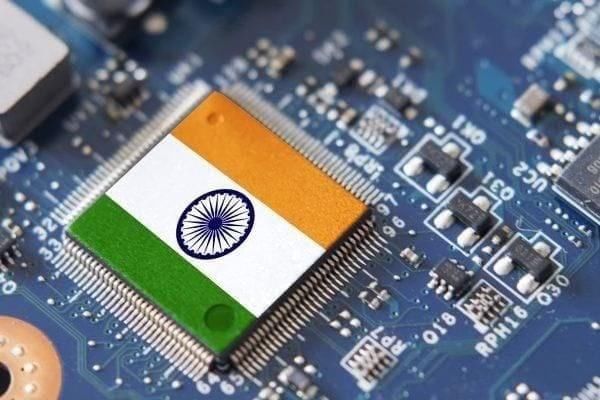 Why in News?
Why in News?
Semiconductors have become the backbone of the global digital economy, essential for a wide range of devices from smartphones to satellites. For India, enhancing semiconductor capabilities is crucial not only for industrial advancement but also for achieving economic, technological, and geopolitical independence. This drive is pivotal to spearheading the semiconductor revolution in India.
Key Takeaways
- Semiconductors are foundational to the digital economy, similar to the role of steel in the industrial age.
- India is witnessing a significant rise in demand for semiconductors due to its expanding electronics ecosystem.
- The Indian government has launched initiatives to establish semiconductor manufacturing plants and enhance global partnerships.
Additional Details
- Evolution of Semiconductors:
- Early Era: Computers operated on vacuum tubes, occupying entire rooms.
- Modern Era: Billions of transistors are now integrated into chips the size of fingernails, powering a variety of technologies including mobile devices and AI systems.
- Strategic Importance:
- National security hinges on semiconductor availability; without them, key sectors like communication and defence cannot function.
- Global chip shortages during the pandemic exposed vulnerabilities in supply chains.
- India’s Semiconductor Mission:
- The India Semiconductor Mission has approved the establishment of 10 semiconductor plants, with the first "Made in India" chip expected this year.
- Global companies are investing in India's semiconductor manufacturing sector, enhancing support for factories and supply chains.
- Talent and Innovation:
- India accounts for 20% of the global chip design workforce and is preparing to fill the anticipated shortage of semiconductor professionals.
- Start-ups are actively developing innovative technologies, such as IoT chips based on indigenous processors.
- Global Collaboration:
- Industry leaders like Lam Research and Applied Materials are committing substantial investments for R&D in India.
- Collaboration with academic institutions is fostering a robust talent pipeline for semiconductor manufacturing.
The semiconductor revolution in India signifies a transformative shift from being merely a consumer of digital technologies to becoming a global producer and innovator. With robust policy support, a focus on talent development, and strong international collaboration, India is poised to emerge as a resilient hub in the global semiconductor value chain, shaping the digital future for itself and beyond.
Vikram 32-Bit Processor
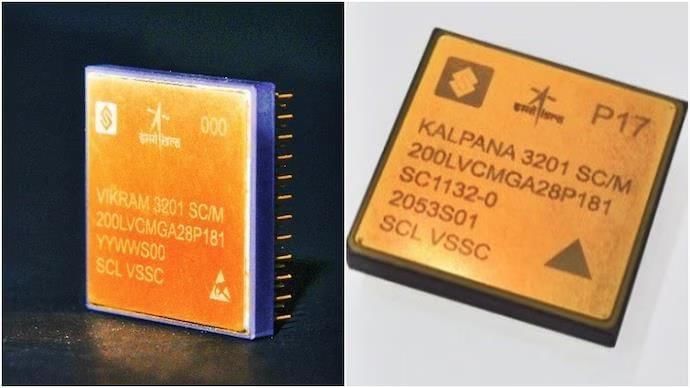
Why in News?
The Union Minister for Electronics & IT recently presented the Prime Minister with a memento featuring the first ‘Made in India’ Vikram 32-bit Launch Vehicle Grade Processor (VIKRAM3201).
Key Takeaways
- India's first fully indigenous 32-bit space-grade microprocessor.
- Developed by VSSC–ISRO Semiconductor Laboratory (SCL), Chandigarh.
- Successor to the 16-bit VIKRAM1601, operational since 2009.
Additional Details
- Launch & Validation: The processor was unveiled at Semicon India 2025, symbolizing India's semiconductor self-reliance. It was validated in space during the PSLV-C60 mission (2025) through the POEM-4 experiments.
- Applications: Primarily designed for space missions, but also suitable for defence, automotive, and energy systems due to its rugged reliability.
- Policy Support: Developed under the India Semiconductor Mission, reflecting a policy emphasis on indigenous chip design and manufacturing.
Key Technical Features
- Architecture: 32-bit design with support for 16/32-bit fixed-point and 64-bit floating-point (IEEE754) operations, crucial for trajectory precision.
- Registers & Memory: Contains 32 registers (32-bit wide) and can address up to 4096M words of memory.
- Instruction Set: Comprises 152 instructions with microprogrammed control for flexibility in aerospace computations.
- Performance: Operates at 100 MHz with a single 3.3V supply, consuming less than 500 mW power and having a quiescent current of less than 10 mA.
- Environmental Tolerance: Functions effectively in temperatures ranging from -55°C to +125°C, making it suitable for space and military conditions.
- Interfaces: Features four 32-bit timers, 256 software interrupts, and dual on-chip 1553B bus interfaces for avionics communication.
- Software Compatibility: Optimized for Ada language (an aerospace standard); ISRO is developing C compiler support.
- Packaging & Fabrication: Constructed in a 181-pin ceramic PGA package, fabricated on a 180 nm CMOS process at SCL, Mohali.
The Vikram 32-bit processor represents a significant advancement in India's capabilities in semiconductor technology, enhancing self-reliance in critical systems.
Roadmap for India’s Fusion Power Plan
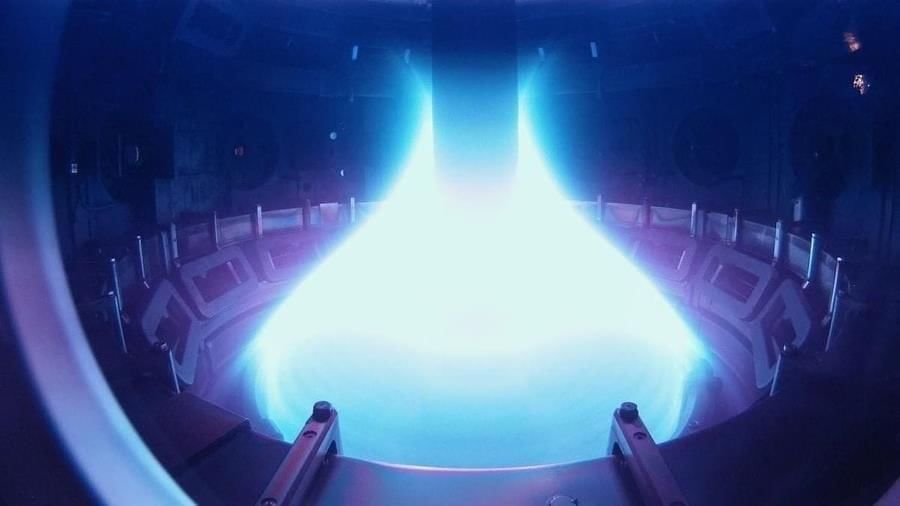
Why in News?
Researchers at the Institute for Plasma Research (IPR) in Gandhinagar have unveiled a roadmap for India's fusion programme, highlighting the Steady-State Superconducting Tokamak-Bharat (SST-Bharat) as the country's inaugural fusion electricity generator.
Key Takeaways
- India's roadmap aligns with the nation's commitment to achieve Net Zero emissions by 2070.
- The project aims to transition from fusion-fission hybrids to a full fusion demonstration reactor by 2060.
- India's contributions to the ITER project showcase its role in global fusion research.
Additional Details
- ITER (International Thermonuclear Experimental Reactor): This is the largest nuclear fusion project globally, located in France, and involves collaboration among 35 nations.
- Nuclear Fusion: The process involves light atomic nuclei, such as hydrogen, merging to form a heavier nucleus, thus releasing substantial energy, akin to the reactions occurring in the Sun.
- Aim of ITER: To demonstrate safe, carbon-free fusion energy by achieving a Q value of 10, producing 500 MW output from a 50 MW input.
- India’s Contribution: India became a full partner in ITER in 2005, contributing 9% of the hardware and investing approximately ₹17,500 crore.
- Major Contributions Include:
- A cryostat, the world's largest vacuum vessel, fabricated in Gujarat.
- Superconducting magnets, cryogenic systems, RF heating systems, and diagnostics.
- Research and development on lithium-lead breeder blankets to ensure tritium self-sufficiency in fusion reactors.
The roadmap outlines a phased strategy with targets set for various timeframes:
- 2025–2035: Focus on ITER participation, validation of deuterium-tritium fueling, superconducting magnets, and plasma control.
- 2035–2060: Development of INDRA, a fusion reactor aimed at 500 MWe output with a Q value greater than 20.
- Post-2060: Plans for commercial-scale fusion plants targeting a total of 50 GW fusion capacity by 2100, helping to offset approximately 750 MT CO₂ annually.
This roadmap represents a significant advancement in India's pursuit of sustainable energy solutions, emphasizing innovation through digital twins of tokamaks and AI-assisted plasma confinement, all while maintaining a cautious approach in the global context of fusion energy developments.
About Steady-State Superconducting Tokamak-Bharat (SST-Bharat)
- Design: SST-Bharat is intended to be India's first fusion electricity generator, incorporating a fusion-fission hybrid model.
- Output: Expected to generate a total of 130 MW, with 100 MW from fission and 30 MW from fusion, achieving a Q-Value of 5.
- Cost: The project is estimated to require an investment of ₹25,000 crore.
- Features: Incorporates superconducting magnets, advanced plasma control systems, and a hybrid breeding design for fuel generation and waste reduction.
- Legacy: Builds upon the achievements of the SST-1 tokamak, which successfully maintained plasma confinement for 650 ms, with a design capacity of up to 16 minutes.
The success of India's fusion energy initiative holds the potential to revolutionize the global energy landscape by providing a sustainable, low-carbon energy source.
Clean Plant Programme (CPP)
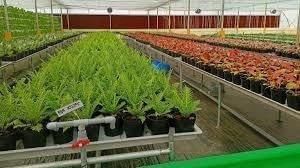
Why in News?
The government has announced the establishment of 9 Clean Plant Centres across the country as part of the recently approved Rs 1,765.67 crore Clean Plant Programme (CPP).
Key Takeaways
- The CPP was cleared by the Union Cabinet in August 2024 with an outlay of ₹1,765.67 crore, supported by a $98 million loan from the Asian Development Bank.
- Implementation is led by the Ministry of Agriculture & Farmers Welfare through the National Horticulture Board (NHB) with technical support from ICAR.
Additional Details
- Objective: The primary goal is to supply virus-free, high-quality planting material to enhance crop yield, quality, and farmer incomes in horticulture.
- Scope: The focus is on fruit crops such as grapes, oranges, pomegranates, apples, and citrus fruits.
- Key Features: Establishment of 9 Clean Plant Centres (CPCs) across India, including three in Maharashtra: Pune (grapes), Nagpur (oranges), and Solapur (pomegranates).
- Research Hub: A national-level laboratory in Pune will focus on original plant species research.
- Financial Aid: ₹3 crore for large nurseries and ₹1.5 crore for medium nurseries, aiming for 8 crore disease-free seedlings annually.
- Certification & Traceability: A robust framework will ensure disease-free mother plants and regulated propagation.
- Global Cooperation: Collaboration with Israel and the Netherlands for clean plant technologies.
- Policy Alignment: The programme supports initiatives like Mission LiFE, One Health, and Viksit Bharat 2047.
- On-Ground Progress: A dedicated website (cpp-beta.nhb.gov.in) has been launched as a central hub for the programme.
- Hazard Analysis: Testing includes 578 grapevine samples and 535 apple samples from various states; preparations for hazard profiling of citrus plants are underway.
- Assessments: ICAR, NHB, and ADB have conducted lab and nursery visits (2024–25) to strengthen diagnostics and bioinformatics using High-Throughput Sequencing (HTS).
- Propagation Protocol: Negative samples will be re-tested, while positive ones will be treated with tissue culture, heat, or cryotherapy before propagation.
- Infrastructure: The first Clean Plant Centre is underway, with design bidding initiated.
The Clean Plant Programme represents a significant step towards enhancing agricultural productivity and sustainability in India, particularly in the horticulture sector.
Desert Soilification Technology
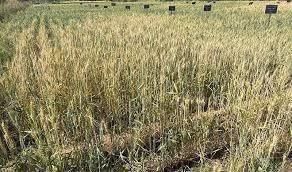
Why in News?
Researchers at the Central University of Rajasthan (CUoR) have successfully utilized desert soilification technology to cultivate wheat in the arid regions of western Rajasthan for the first time, highlighting a significant advancement in agricultural practices in challenging environments.
Key Takeaways
- Desert soilification technology transforms barren desert sand into soil-like material suitable for agriculture.
- This technology aims to combat desertification and enhance agricultural productivity in arid zones.
Additional Details
- Overview: This innovative biotechnological method employs bioformulations and polymers to bind loose sand particles, improving soil texture and enabling efficient water retention.
- How it Works:
- Polymer-based Bioformulation: Natural polymers and microbial formulations are applied to the desert sand to enhance its properties.
- Cross-Linking of Sand Particles: Bio-polymers create a structural network, binding sand grains together, resulting in a soil-like matrix.
- Water Retention: The resulting structure retains water, significantly reducing irrigation needs and preventing rapid water loss.
- Microbial Boost: Beneficial microbes are introduced to stimulate plant growth and improve soil fertility.
- Key Features:
- Sand-to-Soil Conversion: Creates porosity and root-holding capacity through cross-linking.
- Water Retention Efficiency: Enhances moisture retention, reducing irrigation requirements by 30-40%.
- Crop Versatility: Successfully tested with various crops including wheat, bajra, and chickpea, with plans to expand to other crops.
- Low Input Agriculture: Requires fewer irrigation cycles compared to traditional farming methods.
- Climate Resilience: Provides a sustainable model for food production in arid and desertified regions.
- Scalability: Potential for replication in other arid ecosystems such as the Middle East and Africa.
This technology represents a promising solution for enhancing agricultural viability in challenging terrains, offering a sustainable approach to food production and combating desertification.
India’s Only Active Volcano: Barren Island Erupts
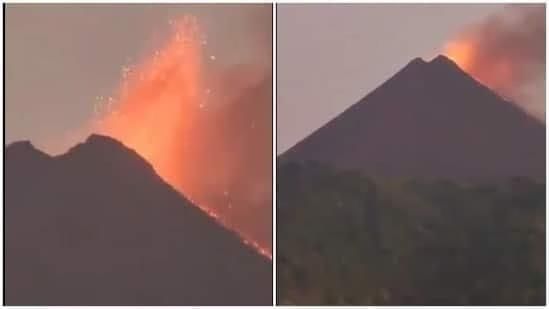
Why in News?
Barren Island, recognized as India's and South Asia's only active volcano, has experienced two eruptions within a span of eight days, drawing attention to its geological significance.
Key Takeaways
- Barren Island is located approximately 138-140 km northeast of Port Blair in the Andaman Sea.
- This volcano is part of the volcanic arc situated between Sumatra (Indonesia) and Myanmar.
- The island features a stratovolcano structure, with a crater located 0.5 km from the shore, reaching an elevation of 354 meters above sea level.
Additional Details
- Volcanic Activity: The first recorded eruption of Barren Island was in 1787, with notable eruptions occurring in the years 1789, 1795, 1803-04, 1852, 1991, and minor eruptions in 2025.
- 1991 Eruption: This eruption lasted approximately six months and had a destructive impact on local wildlife.
- Volcanic Explosivity Index (VEI): Generally low, indicating relatively mild eruptions.
- Geological Significance: The oldest lava flows on Barren Island are dated to about 1.6 million years ago, built on 106 million-year-old oceanic crust.
- Barren Island is a crucial site for geological and volcanic research, being the only active volcano in India.
It is important to note that while India does not have other active volcanoes, there are several extinct and dormant volcanoes in the country, including Narcondam Island, Deccan Plateau, Baratang Island, Dhinodhar Hills, Dhosi Hill, Tosham Hills, and Loktak Lake.
Consider the following statements:
- The Barren Island volcano is an active volcano located in Indian territory.
- Barren Island lies about 140 km east of Great Nicobar.
- The last eruption of Barren Island occurred in 1991, and it has remained inactive since then.
Which of the statements given above is/are correct?
- (a) 1 only*
- (b) 2 and 3
- (c) 3 only
- (d) 1 and 3
India’s First Space Observatory AstroSat Completes 10 Years
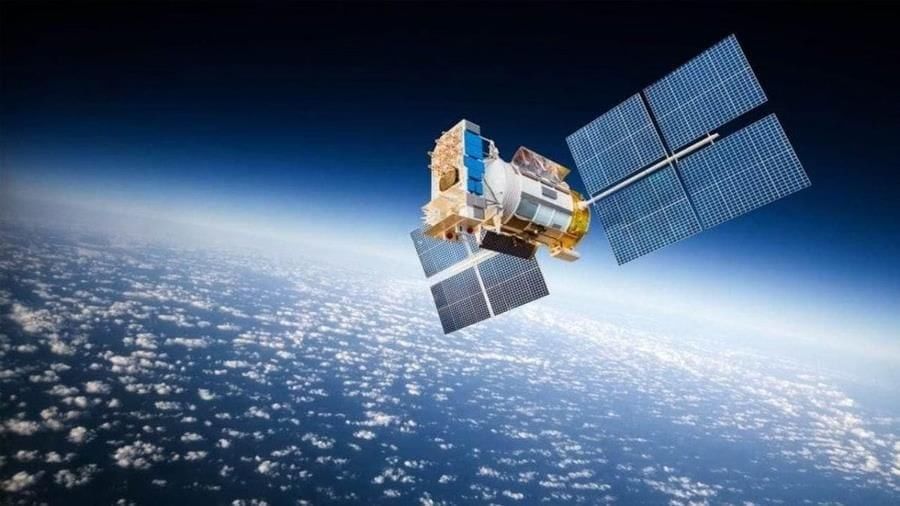
Why in News?
AstroSat, recognized as India’s inaugural multi-wavelength space observatory, marked its 10th anniversary on September 28, 2025. This milestone underscores India’s significant contributions to the field of multi-messenger astronomy.
Key Takeaways
- AstroSat enhances India's capabilities in multi-messenger astronomy.
- It has surpassed its initial operational lifespan of 5 years, continuing to yield valuable scientific data.
Additional Details
- What is Multi-Messenger Astronomy:A modern methodology that utilizes various cosmic messengers to explore the universe beyond just light.
- Messengers include:
- Light (photons): Radio, visible, UV, X-ray, gamma rays.
- Gravitational waves: Arising from black hole or neutron star mergers.
- Neutrinos: Emitted during nuclear reactions in stars.
- Cosmic rays: Charged particles originating from space.
- AstroSat’s Role: It facilitates simultaneous observations across UV, optical, and X-ray wavelengths, allowing for the tracking of astronomical phenomena such as flares, black holes, and neutron stars.
- AstroSat Overview: Launched on September 28, 2015, by PSLV-C30 from Sriharikota, this mission was designed to study celestial sources in multiple bands, setting it apart from most single-band missions.
- Mission Management: The observatory is managed by the Mission Operations Complex (MOX) at ISTRAC in Bengaluru. Its design life was 5 years, yet it remains operational after a decade.
- AstroSat Payloads:Key instruments include:
- UVIT (Ultra Violet Imaging Telescope)
- LAXPC (Large Area X-ray Proportional Counter)
- CZTI (Cadmium-Zinc-Telluride Imager)
- SXT (Soft X-ray Telescope)
- SSM (Scanning Sky Monitor)
- Accomplishments:
- AstroSat has exceeded its original design life and continues to produce data.
- It has documented over 500 black hole formations, contributing significantly to high-energy astrophysics.
- AstroSat has detected extreme UV light from a galaxy located 9.3 billion light-years away, aiding research into the early universe.
- It has studied over 500 gamma-ray bursts with the CZTI instrument.
- AstroSat has identified rare UV-bright stars in the Milky Way, displaying brightness thousands of times greater than that of the Sun.
In conclusion, AstroSat's decade-long journey has not only enriched India's stature in space exploration but has also facilitated groundbreaking discoveries in the field of astronomy.
Regulation of Biostimulants in India
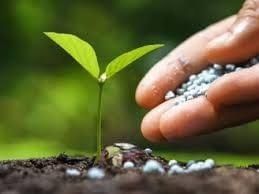
Why in News?
India has established a comprehensive regulatory framework for biostimulants, positioning itself among a select group of countries with specialized oversight in this area.
Key Takeaways
- Biostimulants are defined as substances or microorganisms that enhance plant processes, improving aspects such as nutrient uptake, growth, yield, crop quality, efficiency, and stress tolerance.
- They are distinct from pesticides or plant growth regulators, which are governed by the Insecticides Act of 1968.
- As of now, only 146 products have been formally recognized under the Fertilizer Control Order (FCO).
Additional Details
- Definition: According to Clause 20C of the Fertilizer Control Order (FCO), 1985, biostimulants comprise substances or microorganisms aimed at stimulating plant processes.
- Categories: These include botanical extracts (like seaweed), protein hydrolysates, amino acids, vitamins, biochemicals, antioxidants, anti-transpirants, humic and fulvic acids, cell-free microbial products, and live microorganisms (excluding biofertilizers and biopesticides).
- Regulation Timeline:
- Before 2021: Approximately 30,000 unregulated products were available in Indian markets.
- February 2021: Biostimulants were included under FCO; a provisional registration system (G3 certificates) was introduced with around 8,000 products approved temporarily.
- Current Status: Only 146 products have been formally notified in Schedule VI.
- Key Amendments (2021–2025):
- Biostimulants are now legally recognized under FCO.
- In 2023-24, provisional validity was extended to prevent disruption.
- Live microorganisms (excluding biofertilizers/biopesticides) were added as a recognized category.
- The pesticide residue limit increased from 0.01 ppm to 1 ppm.
- Stricter quality testing, labelling, and safety standards have been implemented.
- The provisional registration system has been discontinued.
- Significance:
- Protects farmers from fraudulent or unproven products.
- Promotes validated indigenous products aligned with the Atmanirbhar Bharat initiative.
- Establishes standards for quality, safety, and labelling through official notifications.
- Makes India one of the few countries with a dedicated biostimulant law, ensuring a balance between farmer welfare, environmental safety, innovation, and regulation.
In conclusion, the establishment of a regulatory framework for biostimulants marks a significant step toward ensuring the quality and safety of agricultural inputs in India, fostering innovation and protecting farmers.
Adi Vaani App: India’s First Tribal AI Translator
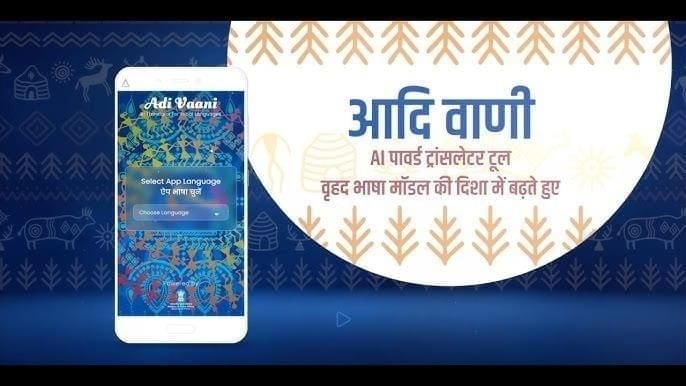
Why in News?
The Ministry of Tribal Affairs has recently launched the Beta Version of Adi Vaani, which is recognized as India’s first AI-based translator specifically designed for tribal languages. This initiative aims to empower tribal communities and preserve endangered languages.
Key Takeaways
- Launch of Adi Vaani in Beta Version (2025).
- Developed under the Janjatiya Gaurav Varsh initiative.
- Created by a collaboration of institutes including IIT Delhi, BITS Pilani, and IIIT Hyderabad.
- Focus on enhancing digital literacy and cultural identity among tribal communities.
Additional Details
- Translation Modes: The app supports various modes including Text-to-Text, Text-to-Speech, Speech-to-Text, and Speech-to-Speech.
- Languages (Beta): Currently includes Santali, Bhili, Mundari, and Gondi, with plans to add Kui and Garo.
- AI Models: Utilizes NLLB (No Language Left Behind) and IndicTrans2 models, specifically adapted for low-resource languages.
- Community-Driven Development: Data is collected and validated by local experts, ensuring relevance and accuracy.
- Toolkit Additions: Features OCR for digitizing manuscripts, bilingual dictionaries, and curated repositories to support language preservation.
Overall, Adi Vaani represents a significant step forward in utilizing technology to support tribal languages and cultures, positioning India as a leader in the field of AI for endangered languages.
New Policy to Boost Geothermal Energy in India
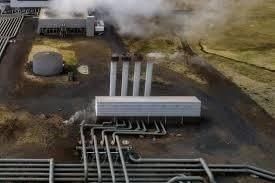
Why in News?
The Indian government has introduced a new national geothermal energy policy aimed at assessing the commercial viability of geothermal technology. This initiative has attracted interest from companies in the US, Iceland, and Norway, which are exploring research and development (R&D) as well as pilot projects in regions such as the Gulf of Cambay, Arunachal Pradesh, and Uttarakhand.
Key Takeaways
- Geothermal energy utilizes the Earth's heat for power generation and various applications.
- India has significant geothermal potential, estimated at 10.6 GW.
- Abandoned oil wells are being considered for geothermal energy repurposing.
- Collaborations with international firms are underway for enhanced geothermal systems.
Additional Details
- Geothermal Energy: This form of energy harnesses heat from underground sources, such as hot springs, to generate electricity. It can also provide heating, cooling, and support for greenhouse and aquaculture activities.
- Geothermal Potential in India: The Geological Survey of India (GSI) has identified 381 hot springs with temperatures ranging from 35°C to 89°C, with major geothermal sites located in the Himalayan Geothermal Province and the Cambay Graben, among others.
- Process of Generation:The geothermal energy generation process involves several steps:
- Extraction: Drilling wells to access geothermal reservoirs.
- Conversion: Bringing hot water or steam to the surface to drive turbines.
- Electricity Generation: Converting mechanical energy from turbines into electricity through generators.
- Reinjection: Returning cooled water back into the geothermal reservoir to sustain pressure.
- Challenges: High upfront costs and exploration risks pose challenges, with estimates of ₹36 crore required per megawatt of capacity. The new policy will provide support for R&D and pilot projects.
- Potential Benefits: Geothermal energy could significantly lower electricity costs in remote regions such as the Andaman and Nicobar Islands and Ladakh, where current costs are high.
In conclusion, the new geothermal energy policy represents a significant step towards sustainable energy production in India, aiming to leverage natural resources effectively while encouraging innovation and international collaboration.
PRATUSH Mission
Why in News?
The Raman Research Institute (RRI) has developed the Probing ReionizATion of the Universe using Signal from Hydrogen (PRATUSH) Telescope. This mission aims to study the "Cosmic Dawn" by detecting radio signals emitted from neutral hydrogen gas.
Key Takeaways
- The PRATUSH mission is designed by the Raman Research Institute (RRI) in Bengaluru, an autonomous institution under the Department of Science and Technology (DST).
- The main objective is to investigate the period when the first stars and galaxies formed, by detecting faint 21-cm radio signals from neutral hydrogen.
- The lunar far side serves as an optimal location for this study due to minimal radio noise and atmospheric distortions found on Earth.
- This research will enhance our understanding of how the first stars heated and ionized hydrogen gas, contributing to insights into dark matter and fundamental physics.
Additional Details
- Compact Design: The telescope is small, lightweight, and power-efficient, adhering to the global trend of miniaturized space instruments.
- Digital Receiver System: It utilizes a single-board computer, such as a Raspberry Pi prototype, equipped with an FPGA (Field Programmable Gate Array) to process high-speed radio data.
- Operational Mechanism: The antenna collects faint hydrogen signals, which are amplified by an analog receiver. The digital receiver and FPGA convert these signals into detailed spectral fingerprints, revealing the sky's brightness.
- Test Results: Laboratory trials lasting 352 hours demonstrated extremely low noise levels (a few millikelvins), confirming its ability to detect faint cosmic signals.
- SWaP Advantage: The telescope is optimized for Size, Weight, and Power (SWaP), making it highly suitable for deployment in space.
The PRATUSH mission represents a significant advancement in our efforts to explore and understand the early universe and its formation, highlighting the capabilities of modern space technology.
Isobutanol-Diesel Blending: India’s New Biofuel Experiment
Why in News?
India is currently investigating the blending of isobutanol with diesel as an alternative to ethanol, with a pilot project initiated to evaluate its technical and economic feasibility. This initiative marks a significant step in India's biofuel exploration as the nation seeks to diversify its energy sources and meet climate objectives.
Key Takeaways
- Isobutanol is being considered after the limitations of ethanol-diesel blending were recognized.
- The government aims to assess the feasibility of isobutanol-diesel blends through pilot projects.
- If successful, India could pioneer this technology on a global scale.
Additional Details
- Isobutanol:A four-carbon alcohol used extensively in various industries, including paints and chemicals. It possesses beneficial properties such as:
- Higher Flash Point: Isobutanol is less volatile and safer than ethanol, thereby reducing fire risks.
- Better Miscibility with Diesel: It blends more effectively with diesel without the need for extensive chemical modifications.
- Versatile Feedstock: Can be produced from sources like sugarcane syrup and molasses through microbial fermentation.
- Challenges with Ethanol Blending: Ethanol's integration with diesel faced several issues, including low flash points and compatibility problems that required additives.
- Production Viability: A sugar refinery can potentially produce isobutanol alongside ethanol with minimal infrastructure changes, leveraging India's abundant sugarcane resources.
- Technical Considerations: Isobutanol has a lower cetane number than diesel, which may affect combustion efficiency and require cetane improvers, impacting overall costs.
- Global Context: India’s move into isobutanol aims to broaden its biofuel portfolio and reduce reliance on imported fossil fuels.
In conclusion, India's exploration of isobutanol-diesel blending showcases its commitment to innovation in biofuels, with the potential to set a precedent for other nations if proven successful.
What is Uranium Enrichment?
Why in News?
Iran’s supreme leader recently announced that Tehran has limited its uranium enrichment to 60% U-235 and will not pursue further enrichment to approximately 90% (weapons-grade). This development has significant implications for international relations and nuclear non-proliferation efforts.
Key Takeaways
- Uranium enrichment increases the proportion of the U-235 isotope in uranium.
- Natural uranium contains only 0.7% U-235, with the remainder primarily U-238.
- Types of enriched uranium include Low-Enriched Uranium (3-5%) for civilian reactors and Highly Enriched Uranium (HEU, >20%) for weapons.
- Methods of enrichment involve physical separation techniques such as gas centrifuges.
Additional Details
- Low-Enriched Uranium: Typically used in civilian nuclear power reactors, providing controlled power generation.
- Highly Enriched Uranium: At 90%+ enrichment, uranium becomes weapons-grade, posing proliferation risks and facilitating rapid development of nuclear weapons capabilities.
- Iran claims its enrichment program is for peaceful purposes, yet the 60% enrichment level raises concerns about its potential to shorten the "breakout time" to weapons-grade material.
- The International Atomic Energy Agency (IAEA) has reported significant stockpiles of 60% enriched uranium, leading to heightened global suspicion.
- Geopolitically, the Joint Comprehensive Plan of Action (2015) aimed to cap enrichment at 3.67%, but the agreement collapsed after the U.S. withdrawal in 2018.
The strategic dimension of Iran's enrichment program places the country on the nuclear threshold, granting it leverage in international negotiations while maintaining a stance of deterrence without overtly developing nuclear weapons.
What are Stablecoins?

Why in News?
Stablecoins are currently under regulatory scrutiny worldwide. The Bank of England has proposed ownership limits for individuals (£10k–£20k) and businesses (£10 million) to mitigate risks to the banking system.
Key Takeaways
- Stablecoins provide price stability and are often used for fast, low-cost cross-border transactions.
- They are primarily a bridge asset in crypto markets rather than being commonly used for retail payments.
Additional Details
- Definition: Stablecoins are cryptocurrencies designed to maintain a stable value, typically pegged to fiat currencies, commodities, or other cryptocurrencies.
- Types of Stablecoins:
- Fiat-backed (e.g., Tether/USDT)
- Commodity-backed (e.g., gold, silver, oil)
- Crypto-backed (collateralized by other cryptocurrencies)
- Algorithmic (maintaining peg through programmed supply and demand adjustments)
- Example: Tether (USDT) is theoretically backed by cash and US Treasuries.
- Market Growth: Stablecoin market could grow tenfold to reach $2 trillion by 2028, according to Standard Chartered (April 2025).
Risks Associated with Stablecoins
- Financial Stability Risk: Stablecoins are vulnerable to bank-run scenarios, as demonstrated by the TerraUSD collapse in 2022, which lost 60% of its peg value.
- Banking System Impact: Stablecoins can drain deposits from banks, affecting their lending capacity.
- BIS Concerns:
- Singleness: Deviations from fiat peg in secondary markets.
- Elasticity: Limited expansion due to reserve requirements.
- Integrity: Weak KYC processes can facilitate money laundering and terror financing.
- Cybersecurity: DeFi-linked stablecoins are prone to hacking and theft.
- Regulatory Gaps: The absence of uniform global standards leads to issues with fraud and accountability.
Global Regulatory Approaches
- United States, GENIUS Act (2025): Only insured financial institutions may issue stablecoins, requiring them to hold 1:1 low-risk reserves and comply with AML/CFT regulations.
- European Union, MiCA (2024): Regulates E-money Tokens (EMTs) and Asset-Referenced Tokens (ARTs), restricting issuers to authorized EU firms and enforcing strict reserves and consumer protection.
- Hong Kong, Stablecoin Ordinance (2025): Licensing by the HK Monetary Authority requires full high-quality liquid reserves and adherence to strict audits and AML/CFT rules.
- United Kingdom, Bank of England: Proposed measures to prevent rapid deposit outflows and ensure financial stability.
The Long March Ahead to Technological Independence

Why in News?
On August 15, 2025, India marked its 79th Independence Day, reflecting not only on political freedom but also on the crucial need for technological sovereignty. In an increasingly interconnected world, true independence now includes the ability to manage and trust the digital systems that influence all facets of national life. Without this sovereignty, India risks merely exchanging one form of dependence for another.
Key Takeaways
- The nature of global conflict has evolved; modern wars are now fought in cyberspace.
- India's reliance on foreign technology poses significant national vulnerabilities.
- Achieving technological sovereignty requires a collective effort from India's IT professionals.
- Hardware independence is even more challenging than software sovereignty.
Additional Details
- Geopolitical Context: The current global landscape sees critical infrastructure, such as banks and power grids, heavily dependent on foreign-controlled technology, creating risks for national security.
- Path to Autonomy: India must develop indigenous software and hardware capabilities, focusing on open-source solutions and fostering a collaborative environment.
- Social Movement: A renewed commitment to the open-source movement is necessary, rallying both professionals and citizens to support homegrown software initiatives.
- Implementation Focus: Establishing mission-oriented programs that prioritize practical implementation of essential digital infrastructure is crucial for achieving self-sufficiency.
In conclusion, as India navigates the complexities of technological dependence, it stands at a pivotal crossroads. The pursuit of independence in technology is not merely an option but a necessity for ensuring national security and economic resilience. The journey towards technological sovereignty will demand collective will and sustained effort, echoing the historical struggles for political independence.
|
1360 docs|798 tests
|
FAQs on Science & Technology: September 2025 Current Affairs - Current Affairs: Daily, Weekly & Monthly - CLAT
| 1. What is the significance of the Vikram 32-Bit Processor in India's semiconductor revolution? |  |
| 2. How does the Clean Plant Programme (CPP) aim to enhance agricultural productivity in India? |  |
| 3. What are the key objectives of India's Fusion Power Plan? |  |
| 4. What is the role of the Adi Vaani App in promoting tribal languages in India? |  |
| 5. How does Desert Soilification Technology contribute to sustainable agriculture in arid regions of India? |  |
















